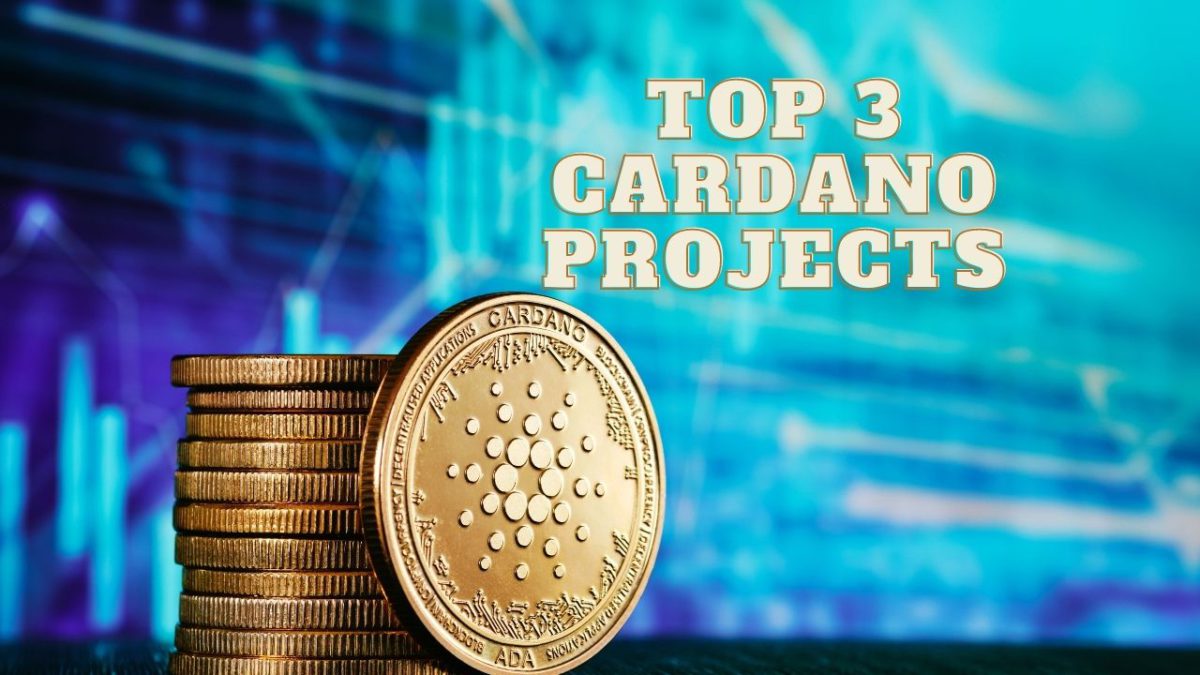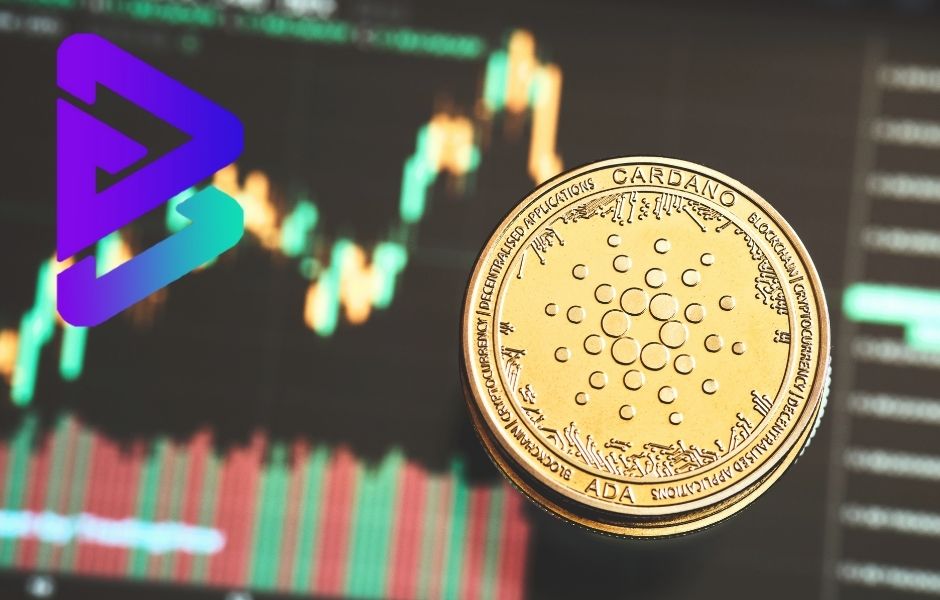How Is DeFi Changing The Lending Routes Of Blockchain World
The realm of decentralized finance (DeFi) is gradually spreading to encompass a large share of the global financial lending sector because of its inherent trustlessness and ease of acquiring currency. The crypto ecosystem has grown to a $2 trillion market capitalization. Thanks to burgeoning innovation in blockchain technology, new products and services have emerged.
Lending and borrowing have become a key part of the crypto economy since the advent of DeFi. The old financial system’s major services were lending and borrowing, and most people are familiar with terms like mortgages and student loans.
A lender gives a borrower a loan and earns interest in exchange for taking the risk, while the borrower provides collateral in the form of real estate, jewelry, and other assets in traditional borrowing and lending. Financial institutions such as banks facilitate transactions in the traditional financial system by conducting background checks such as KYC and credit scores before approving a loan.
Explaining lending through DeFi
Borrowing, lending, and blockchain
In the blockchain ecosystem, lending and borrowing activities can be carried out in a decentralized manner, where the parties involved can deal directly with each other without the use of an intermediary or a financial institution via smart contracts. Smart contracts are self-executing computer codes that have a specific logic and are coupled with transaction regulations (programmed). Fixed interest rates, loan amounts, and contract expiration dates are all instances of regulations or loan terms that be carried out automatically when certain criteria are met.
Decentralized finance #DeFi provides a clear description for an emerging ecosystem of blockchain-based alternative financial systems. DeFi platforms help users in engaging in different traditional financial transactions such as lending and borrowing through direct #P2P exchanges.
— Tom (@Tomheroy_io) May 10, 2022
On a DeFi network, loans are obtained by exchanging crypto assets for other assets as collateral. Users can become lenders by placing their currencies into a DeFi protocol smart contract. In exchange, they receive native protocol tokens like cTokens for Compound, aTokens for Have, and Dai for MakerDao, to name a few. These tokens represent both the principal and the interest that can be redeemed later. Borrowers exchange crypto assets for other crypto assets they intend to use as collateral while borrowing from one of the DeFi protocols. The loans are typically over-collateralized to account for unanticipated expenses and risks associated with decentralized financing.
Borrowing, lending, and total value locked
One can lend and borrow in the decentralized world through a variety of platforms, but one method of evaluating a protocol’s performance and selecting the best one is to look at the total value locked (TVL) on such platforms. The TVL is a metric for assessing DeFi protocol adoption since the greater the TVL, the more secure the protocol becomes.
Smart contract platforms have become a key element of the crypto ecosystem, making it easier to borrow and lend, thanks to the savings provided in the form of lower transaction fees, faster execution, and shorter settlement time. The most popular smart contract platform is Ethereum, which was also the first blockchain to include smart contracts. The TVL in DeFi protocols has expanded by over 1,000%, from $18 billion in January 2021 to over $110 billion in May 2022.
🧵 $30B in TVL wiped out by the $LUNA and $UST collapse. Total #DeFi TVL slashed in half over the last month.
What does the future hold for DeFi on the major #Layer1 chains and protocols? My thoughts in 10 tweets. 1/10
— ALΞX (@CrossChainAlex) May 15, 2022
Ethereum accounts for more than half of the TVL, or $114 billion, according to DefiLlama. Due to the first-mover advantage, several DeFi lending and borrowing mechanisms are being developed on Ethereum. Other blockchains have gained interest as a result of advantages over Ethereum, such as lower costs, greater scalability, and greater interoperability.
Two Ethereum DeFi protocols, Aave and Compound, are two of the most popular DeFi lending services. However, Anchor, built on the Terra blockchain, has witnessed significant development in the previous year. Based on TVL, the graph below depicts the top DeFi lending protocols.
DeFi platforms enable unparalleled transparency and permissionless access, allowing anyone with a crypto wallet to use services from anywhere on the planet.
Despite this, the DeFi loan market has a lot of room for growth, and the use of Web3 crypto wallets ensures that DeFi participants preserve their assets and have complete control over their data, thanks to the cryptographic security provided by blockchain architecture.
Also, read – UniLend, the Platform Changing the Defi Community
Key Advantages of using DeFi for lending
Lending through Decentralized Finance (DeFi) platforms offers several significant benefits to both lenders and borrowers. Let’s explore some of the key advantages:
- High Interest Rates: DeFi lending platforms often provide significantly higher interest rates compared to traditional financial institutions. This can be attributed to the absence of intermediaries, lower overhead costs, and the ability to directly connect lenders and borrowers in a peer-to-peer manner. As a lender, you can earn attractive returns on your crypto assets by lending them through DeFi protocols.
- Access to Global Market: DeFi lending platforms operate on blockchain networks, which are accessible to anyone with an internet connection. This global reach enables lenders to tap into a wide range of borrowers from various parts of the world. Similarly, borrowers gain access to a global pool of lenders, expanding their borrowing options beyond traditional local financial institutions.
- Transparency and Security: DeFi lending platforms leverage blockchain technology, which provides transparency and immutability. All transactions and lending activities are recorded on the blockchain, ensuring that they cannot be altered or manipulated. This transparency builds trust among participants and reduces the risk of fraud or misappropriation of funds.
- Non-Custodial Control: DeFi lending platforms are typically non-custodial, meaning that users retain control over their crypto assets throughout the lending process. Users can securely connect their wallets to the lending platform, ensuring that they remain in control of their funds. This eliminates the need to trust a centralized entity with the custody of their assets, reducing counterparty risk.
- Flexibility and Customization: DeFi lending platforms offer flexible lending terms and options. Lenders can choose the duration of lending, interest rates, and collateral requirements based on their risk appetite and investment goals. Borrowers, on the other hand, can access loans without the extensive paperwork and credit checks associated with traditional lending institutions. The decentralized nature of DeFi allows for customizable lending and borrowing experiences.
- Automated Smart Contracts: DeFi lending platforms utilize smart contracts, which are self-executing agreements based on predefined rules and conditions. These smart contracts automate the lending process, ensuring that loans are disbursed and repaid automatically once the specified conditions are met. This eliminates the need for intermediaries, reduces operational costs, and streamlines the lending process.
- Diverse Collateral Options: DeFi lending platforms often accept a wide range of cryptocurrencies as collateral, enabling borrowers to leverage their crypto holdings to access loans. This opens up lending opportunities for individuals who may not have traditional assets to use as collateral. Additionally, diverse collateral options contribute to the overall liquidity and stability of the DeFi lending ecosystem.
- Continuous Liquidity: DeFi lending platforms typically provide borrowers with continuous access to liquidity. This means that borrowers can collateralize their assets and borrow funds whenever they need them, without the need for additional credit checks or approval processes. This flexibility enables borrowers to seize investment opportunities or address financial needs promptly.
- Interoperability and Composability: DeFi lending protocols are designed to be interoperable and composable, meaning they can seamlessly integrate with other DeFi applications and services. This interoperability allows for complex financial interactions, such as using borrowed funds from one protocol to provide liquidity in another protocol, thus unlocking additional earning potential and expanding the possibilities within the DeFi ecosystem.
- Empowering Financial Inclusion: DeFi lending platforms democratize access to financial services, empowering individuals who may not have had access to traditional banking services. People in underserved regions or without a credit history can leverage their crypto assets to obtain loans, fostering financial inclusion and economic empowerment.
Lending through DeFi platforms brings numerous benefits, including attractive interest rates, global market access, transparency, security, flexibility, and the empowerment of financial inclusion. However, it’s essential to conduct thorough research, assess the risks involved, and choose reputable platforms with a track record of security and reliability before participating in DeFi lending.
Stay informed with daily updates from Blockchain Magazine on Google News. Click here to follow us and mark as favorite: [Blockchain Magazine on Google News].
Get Blockchain Insights In Inbox
Stay ahead of the curve with expert analysis and market updates.
latest from tech
Disclaimer: Any post shared by a third-party agency are sponsored and Blockchain Magazine has no views on any such posts. The views and opinions expressed in this post are those of the clients and do not necessarily reflect the official policy or position of Blockchain Magazine. The information provided in this post is for informational purposes only and should not be considered as financial, investment, or professional advice. Blockchain Magazine does not endorse or promote any specific products, services, or companies mentioned in this posts. Readers are encouraged to conduct their own research and consult with a qualified professional before making any financial decisions. The featured image used is just a creative depiction of the title and it does not intend to hurt sentiments of any person or institution. If it hurts anyone sentiments, please do not hesitate to reach out to Blockchain Magazine.

 Bitcoin
Bitcoin  Ethereum
Ethereum  XRP
XRP  Tether
Tether  Solana
Solana  USDC
USDC  Dogecoin
Dogecoin  Cardano
Cardano  Lido Staked Ether
Lido Staked Ether  TRON
TRON  Wrapped Bitcoin
Wrapped Bitcoin  Chainlink
Chainlink  Wrapped stETH
Wrapped stETH  Sui
Sui  Avalanche
Avalanche  Stellar
Stellar  Shiba Inu
Shiba Inu  Hedera
Hedera  Toncoin
Toncoin  LEO Token
LEO Token  Hyperliquid
Hyperliquid  Bitget Token
Bitget Token  Litecoin
Litecoin  WETH
WETH  USDS
USDS  Polkadot
Polkadot  Bitcoin Cash
Bitcoin Cash  Ethena USDe
Ethena USDe  Wrapped eETH
Wrapped eETH  MANTRA
MANTRA  Uniswap
Uniswap  Ondo
Ondo  Pepe
Pepe  Aave
Aave  Monero
Monero  NEAR Protocol
NEAR Protocol  WhiteBIT Coin
WhiteBIT Coin  Mantle
Mantle  Official Trump
Official Trump  Aptos
Aptos  Dai
Dai  Internet Computer
Internet Computer  Ethereum Classic
Ethereum Classic  Bittensor
Bittensor  Cronos
Cronos  OKB
OKB  POL (ex-MATIC)
POL (ex-MATIC)  Gate
Gate 




